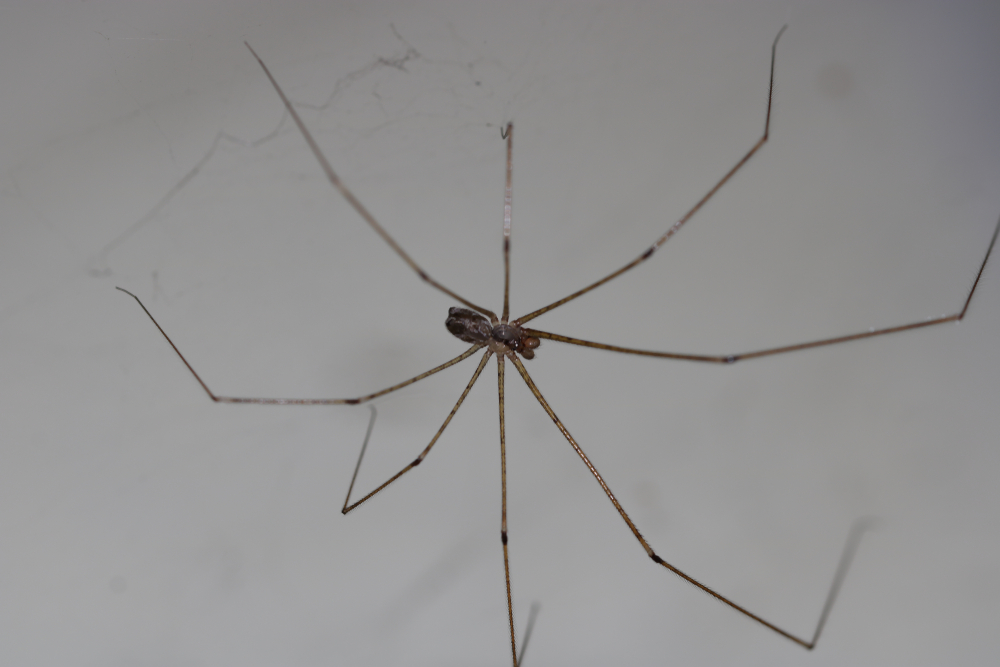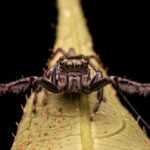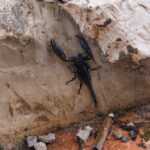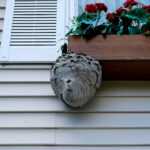Cellar Spiders: Identification, Habits, and Control Tips
Curious about these long-legged arachnids in your home, known as the cellar spider? These slender-legged creatures are commonly found in homes, basements, and garages, making them among the most common spiders in these environments. Cellar spider identification, including their typical habitats and physical features, will be covered in this guide. This guide will help you identify them, understand their behavior, and give tips on managing their presence.
- Members of the Pholcidae family, often confused with daddy long legs, are commonly known as long legged spiders. Cellar spiders live in dark, damp environments such as basements and crawl spaces, as cellar spiders prefer these humid, indoor areas and can live for over two years.
- Their chaotic web structures and unique hunting techniques allow them to effectively capture a diverse range of prey, making them vital for controlling pest populations.
- Despite myths regarding their venom, these spiders are harmless to humans and pose little threat; effective management involves cleanliness and preventing infestations through environmental adjustments.
Understanding These Spiders
Belonging to the family Pholcidae, these arachnids are often mistaken for daddy long legs spider due to their similar appearance. While they share some traits with other species of spiders, cellar spiders are distinct in their web-building behavior and physical characteristics. They are also considered common house spiders because they are frequently found indoors, especially in basements and corners. These creatures can live for over two years, a relatively long lifespan in the spider world. Known scientifically and colloquially as daddy longlegs (Pholcus phalangioides), they are part of a broader classification that includes many species with similar traits, as well as other cellar spiders.
These spiders exhibit a remarkable ability to adapt to various environments, contributing to their prolonged lifespan. Their resilience and adaptability make them a common sight in many households, often spotted in dark and damp corners, including various species within this group and other cellar spiders.
Physical Traits
Characterized by incredibly long, thin legs and small bodies, these arachnids are easily distinguishable from other spiders. They are typically tan or gray, blending well with their surroundings, which aids in their survival. They have eight eyes arranged in two rows, which helps distinguish them from other arachnids. The spider’s fangs are short and uncate, generally insufficient to penetrate human skin. This is in contrast to the spider’s fangs of more dangerous species such as the brown recluse, which, despite also having short fangs, can still bite humans. The two main groups identified are based on their body and leg lengths: long bodied cellar spiders and short bodied cellar spiders.
Long bodied cellar spiders can reach a body length of 7-8 mm, while short bodied cellar spiders measure around 1-2 mm. All have eight legs, a key feature of spiders. Their cylindrical abdomens are significantly longer than they are wide, adding to their unique appearance. These physical traits make them fascinating to observe and play a key role in their hunting and web-building activities.
The long, thin legs are adapted to navigate their chaotic webs and capture prey efficiently. Their front legs are often the longest and most delicate, combined with their slender bodies, making them one of the more visually distinctive spider species you might encounter in your home. The longbodied cellar spider (Pholcus phalangioides) is especially known for its small body and extremely long legs.
Natural Habitat
These spiders are particularly fond of constructing their webs in areas with higher humidity and prefer dark environments. You’ll often find them in cellars, basements, and garages, where they can thrive in the damp conditions. Cellar spiders live in damp places such as basements, crawlspaces, and garages, as these moisture-rich environments are ideal. They are also commonly located in the corners of various structures, including homes and barns, where darkness prevails. Indoors, cellar spiders live in dark, damp areas such as basements, crawl spaces, and behind HVAC units, where they create webs and hunt for insects.
Their preference for dark, cool, and damp environments means they are often found where other insects are likely to be trapped. Insects are typically attracted to these environments, which in turn attracts cellar spiders. This provides ample food sources and ensures their webs remain undisturbed longer, allowing them to catch more prey.
Behavior and Webs
The adult cellar spider displays unique behaviors that set it apart from many others. Adult cellar spiders prefer to live in dark, cool, and damp environments, making basements and cellars ideal habitats. They can be found indoors year-round, especially in climate-controlled structures, where they maintain a stable living environment.
One of the most notable behaviors is their defensive wobbling or vibrating movements. This behavior has earned them the nickname “vibrating spiders,” as they rapidly bounce in their webs to confuse predators and avoid detection. When they feel threatened, adult cellar spiders may hang upside down in their webs and bounce to confuse predators. While some people worry that spiders bite, cellar spiders generally do not pose a threat to humans. They may only bite if they feel threatened, but even then, their bites are harmless due to their weak venom. This defense mechanism, combined with their web-building skills, makes them fascinating creatures to observe.
Web Characteristics
Their webs are known for chaotic construction, lacking uniform design. Unlike the intricate and symmetrical webs of orb-weavers, these webs are loose and lack distinct structure, leading to a messy appearance. They are known for creating messy webs in corners and ceilings.
This chaotic web structure is not just random; it plays a crucial role in their hunting strategy. The disorderly arrangement makes it difficult for prey to escape once trapped, ensuring a steady food supply. They spin webs that they continually reinforce and expand to improve prey capture.
Communal Living
Often, these spiders form large communities by cohabiting in the same web space, resulting in dense populations. They often share their webs with others, forming dense colonies. They engage in semi-social behaviors, sometimes working together to maintain webs and share food.
During their juvenile phase, young spiders collaborate within their webs, showcasing communal living arrangements. This group living helps them survive and thrive where solitary living might be more challenging.
Diet and Predation
These spiders play a crucial role in controlling pest populations, as cellar spiders eat a variety of small arthropods, including insects and other spiders. Their diet includes mosquitoes, flies, and other small insects, making them beneficial to have around the house. In addition to insects, they may prey on other spider species, such as brown recluse spiders and black widow spiders. Cellar spiders bite their prey to subdue them, using pholcid venom to immobilize even larger or potentially dangerous spiders. Their ability to capture and subdue these spiders is due to their effective webbing and the action of their mild venom.
Controlling pest populations, they help maintain a balanced environment in homes. Their presence can reduce the number of other pests, providing natural pest control.
Prey Preferences
They have a diverse diet, preferring small moths, flies, and mosquitoes among other insects and spider species. Additionally, they may consume other arachnids, contributing to their role as beneficial predators. Larger insects like beetles and wasps, as well as prey such as wolf spiders and crane flies, can also be part of their diet. Their adaptability in diet showcases their hunting versatility.
Hunting Techniques
They exhibit unique hunting behaviors, including traveling to other webs and pretending to be trapped insects to lure prey. This deceptive strategy allows capturing unsuspecting prey that might otherwise avoid their webs.
Their adaptability is further shown by leaving webs to pursue prey. This flexibility ensures effective capture of prey larger than themselves, demonstrating their prowess as predators.
Myths and Misconceptions
Despite their harmless nature, these spiders are often surrounded by myths and misconceptions. One common myth is that they have highly toxic venom, which could be lethal to humans. However, the idea that they have potent venom is an urban myth. Scientific evidence shows they are harmless and pose no significant threat to humans. While cellar spiders can technically bite people, their spider’s fangs are very short and not strong enough to penetrate human skin, so there is no scientific evidence suggesting their bites are harmful.
Another widespread belief is that they are among the most venomous spiders. This misconception likely stems from their appearance and fear of spiders. In reality, their venom is not particularly potent, and they are not considered dangerous to humans. In fact, most spiders, including these, are harmless to humans.
Venom Potency
Research indicates their venom is not toxic to humans and does not cause significant harm. Although they possess venom glands, their venom is weak and not dangerous to humans. Their venom has been shown to be non-lethal, causing only mild discomfort if bitten.
They have weak venom, and their fangs are too short to penetrate human skin effectively. Overall, these factors make them non-threatening despite their fangs.
Biting Humans
While capable of biting, they typically do not exhibit aggressive behavior towards humans. Bites are rare and usually harmless. Their short fangs hinder their ability to penetrate human skin, making bites uncommon. They are unlikely to bite humans, focusing instead on trapping insects for food.
Even if they bite when threatened, they pose low risk in homes.
Life Cycle and Reproduction
Their life cycle is fascinating, beginning with egg sac production by females. They reach adulthood in about one year and typically live for two or more years. Adults produce multiple egg sacs throughout life, contributing to their presence in various environments.
Knowledge of their life cycle aids effective population management.
Egg Sacs
Females produce egg sacs carried in their mouthparts instead of attaching them to webs. These sacs are made from silk strands and a sticky substance for protection. A single sac typically contains between 13 and 60 eggs.
Finding these sacs indicates potential infestation, showing reproduction and population establishment.
Maturation Process
Hatchlings resemble miniature adults and remain near the eggshell briefly before dispersing. It takes about one year to reach maturity, developing into fully grown adults.
This process ensures steady populations with new generations emerging regularly. Understanding it helps predict and manage their presence.
Managing Infestations
Managing infestations, especially a cellar spider infestation, involves maintaining cleanliness and reducing clutter in dark areas, including crawl spaces. Inspection and identification are important steps in controlling a cellar spider infestation, as these spiders are attracted to areas where insects gather, influenced by exterior lighting. Regular cleaning and vacuuming prevent webs from establishing.
Vacuuming existing spiders and webs is effective. Adjusting exterior lighting, such as using yellow bulbs, reduces insect attraction and lowers infestation likelihood. These steps significantly reduce infestation chances.
Prevention Strategies
Prevention starts with clean, well-organized environments. Using dehumidifiers manages damp areas, reducing spider populations.
Switching to yellow lightbulbs reduces flying insects attracted to outdoor lights, lowering food sources. Inspecting for cracks and crevices prevents entry.
Removal Methods
Sweeping or vacuuming is the fastest way to remove spiders and webs. Sticky traps effectively capture spiders without pesticides.
For severe infestations, soap solution sprays kill spiders and remove webs. Pesticides labeled for spiders can also eliminate them.
When to Call a Professional
Rapidly increasing indoor populations warrant pest control. Escalating activity, especially with children or pets, needs professional help.
Venomous spiders indoors require immediate action and pest control services. Professionals provide thorough assessment and targeted treatments.
Signs of Larger Issues
These spiders often indicate larger insect problems. Inspections reveal other pest species serving as food.
Significant infestations may require professional pest control for effective management. Addressing root causes prevents future issues.
These arachnids are fascinating creatures with unique traits, behaviors, and ecological roles. Understanding their life cycle, diet, and myths helps manage their presence.
Maintaining cleanliness, reducing clutter, and using removal methods helps control infestations. Seek professional help if needed to ensure a spider-free home. Embrace the knowledge and take control.
Frequently Asked Questions
Do their bites hurt?
Their bites do not cause pain, as they are not medically important and unlikely to bite humans due to short fangs. Concerns about venom are unfounded.
Why do they appear?
They appear primarily for shelter and hunting insects. Attracted by outdoor lighting and entry points, they seek dark, protected areas like basements and attics.
Are they harmful to humans?
They are not harmful as venom is weak and fangs too short to penetrate skin. They pose no significant threat.
How to prevent infestations?
Maintain cleanliness and reduce clutter. Using dehumidifiers and yellow lightbulbs deters them.
What do they eat?
They consume small arthropods like mosquitoes, flies, and other insects. Their diet can include smaller spiders.




